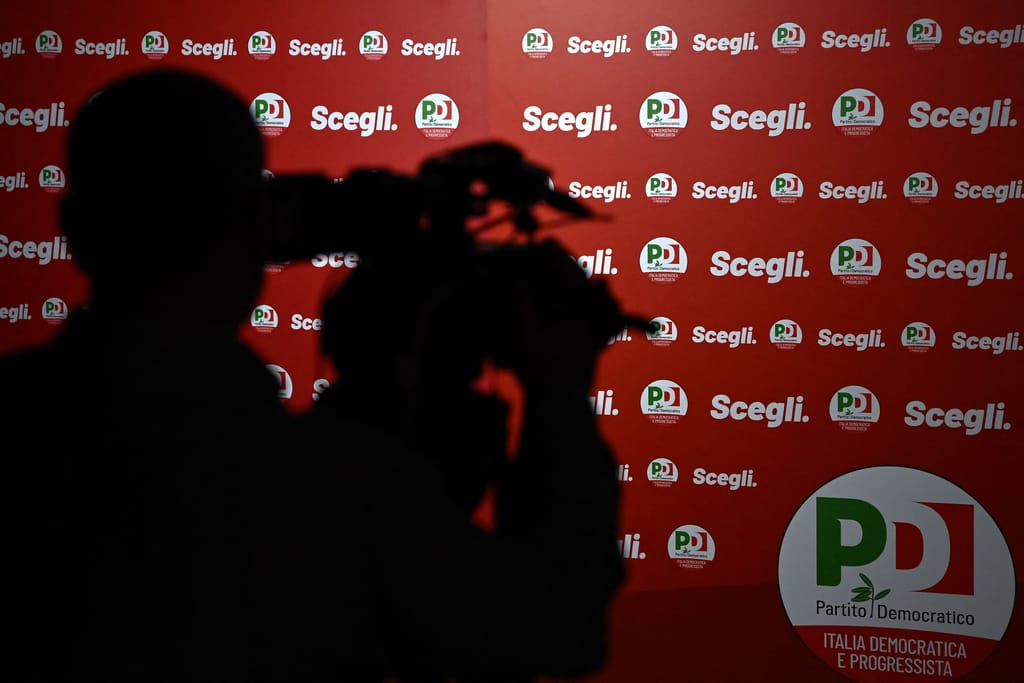Tommaso Grossi is a policy analyst in the Social Europe and Well-Being Programme at the European Policy Centre. The opinions expressed are his own, and not those of his employer. Niccolò Barca is a freelance journalist and photographer based in Rome.
Triggered by outgoing Italian Prime Minister Mario Draghi’s premature fall, the result of Italy’s September election was predictable. The far-right coalition of Brothers of Italy, the League and a declining Forza Italia scored an incontestable victory, while the center-left Democratic Party (PD), supported by the Greens and the Italian Left (SI), did even worse than expected.
The shortest electoral campaign in Italy’s history once again ended up rewarding the party that seemed to best oppose the establishment, for the third time in nine years. And much like the M5S in 2013 and the League in 2018, the Brothers of Italy have now emerged from the political fringes to become the biggest party in parliament.
Much has been written about them in the days since, but it’s important to remember that the right wing is what it is partly because of what the left wing is — and it’s worth examining why the left failed so spectacularly to present itself as a credible candidate.
The “social deficit” of center left-wing parties across Europe is hardly news. Social democrats have undergone a swift transition toward the center on social and civic rights, and they’ve swung even further to the right on economic policy. In this, Italy is no different, with the PD being a classic example of this shift.
In the past decade, the PD has often advocated for a mix of policies, arguing for smaller government and presenting the market as the best instrument for the efficient allocation of benefits and jobs.
As elsewhere in Europe, party membership, as well as its vote share among workers and the unemployed, has steadily declined, with support for the PD now increasing with level of education and income. The PD has thus become the party of high-income earners, urban residents and those with liberal professions.
Meanwhile, only recently did the party attempt to distance itself from the former leadership of Matteo Renzi, who modeled his politics on those of Britain’s former Prime Minister Tony Blair’s New Labour — and it did this more in rhetoric than in practice.
Under Enrico Letta’s leadership during the recent electoral campaign, the PD’s program showed only timid signs of correction, displaying just a slightly deeper concern about income inequality. Letta pushed proposals for a minimum wage and an ambitious social housing scheme — but these policies were too little and too late. They were also swamped by the party’s decision to lazily frame its electoral campaign as a struggle between itself and fascism.
Building a credible political and social vision that could inspire both old and new voters seems to have never really been considered as a strategy. Instead, the party thought it could just rely on people’s fears. Nobody can truly say they were surprised this strategy failed to pay off, so why was it adopted in the first place?
One could argue that policies once linked with social democracy are increasingly at odds with the ideology of the PD’s ruling class, inevitably seen by left-wing voters as a party rooted in the establishment and the elite, and incapable — or unwilling — to represent a much wider electoral base.
Across Europe social democrats like Italy’s Democratic Party (PD) have transitioned toward the center on social and civic rights, and further right on economic policy | Tiziana Fabi/AFP via Getty Images)
Being in government has also become all important for the PD, which now builds its strategy with any eye toward being able to form alliances with virtually any rival. To be able to join a coalition government, most of the party elites have long defended the idea that the PD should focus on maintaining vague, moderate positions. And in support of this, French President Emmanuel Macron’s centrism is often framed as a winning formula, while Britain’s former Labour leader Jeremy Corbyn’s electoral defeat in 2019 is cited as an example of what happens when social democratic parties go too far left.
Finally, Enrico Letta also failed to agree to an alliance with the PD’s natural ally, the M5S — the explicit reason for this being the party’s role in the crisis that put an end to Draghi’s government.
Letta’s other option was an alliance with former PD members Carlo Calenda and Matteo Renzi, whose centrist ”third pole” welcomed many former members of Silvio Berlusconi’s Forza Italia among its ranks. Carefully hiding a much-despised Renzi from sight, Calenda’s Action party did better than many expected. But his vetoes on other possible members of the coalition — guilty, in his view, of having obstructed Draghi’s government, or of being too far left — wrecked any chances of an alliance with the PD.
In his resignation speech as party leader, Letta blamed the M5S for the right’s victory — but that’s just another sign of the PD’s unwillingness to face up to its own shortcomings, which have cost it 5 million votes since 2014. Instead, what the PD actually needs right now is a serious and all-encompassing analysis of its failures, not a superficial reading of what Italians are more likely to vote for.
As party leaders squabble over whether they were too left or too centrist, the PD is now at a crossroads. This election has seen the lowest turnout in Italy’s history, with 36.2 percent of the voting population unable to find a party that represents their needs and interests. Furthermore, as surveys show, redistribution issues, environmentalism and civic rights are still a compelling concern for many Italians.
As such, we will soon find out whether the PD is able, or willing, to strenuously fight for these voters, finally reversing its drift toward the right to defend the interests of those it has long left behind.




